June 15, 2010 Handout for OLLI summer
workshop on
COMPUTERS VERSUS HUMANS*
Leader: Theo Pavlidis (t.pavlidis@ieee.org)
HOW COMPUTERS DEAL WITH PICTURES
The big difference between pictures and text is in the way there are stored in machine memory. When text is stored on a computer, each character is translated into a number and the number is placed into computer memory. So what is in memory corresponds directly to the human interpretation of the text. In contrast pictures are stored through the values of the three basic colors at each point (pixel). What is in computer memory is quite far from what a human sees in a picture (for example shapes).
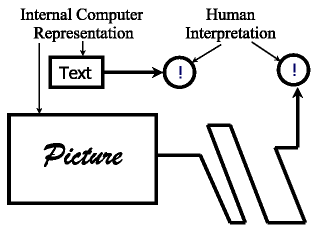 |
For text the path from the internal computer representation to human interpretation and understanding is short and simple, while for pictures the path is quite long and tortuous. |
How a Computer Reads (An Example)
The program identifies parts of each row where all pixels are black and replaces them by short line segments (thin lines below). Then it groups stacks of such segments and replaces them by straight lines (vectors) that are shown as thick lines below.
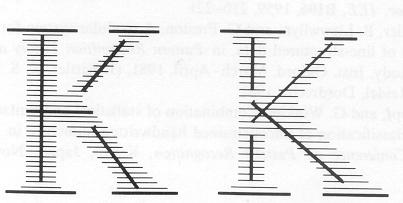
|
Examples of vectorization of two samples of the character "K". Notice how a slight change in the shape of the characters affects significantly the kind of vectors produced. |
* Copyright ©2010 by Theo Pavlidis
The Challenge of Finding and Recognizing Faces
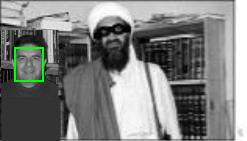 |
The web site http://vasc.ri.cmu.edu/cgi-bin/demos/findface.cgi allows users to submit images and returns the results of a program for face detection, i.e. locating the face or faces in an image. Detected faces are marked with a white rectangle. A major miss is evident on the example shown. |
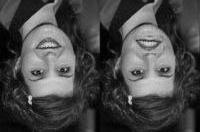 |
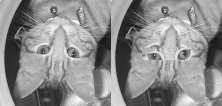 |
| Can you find in what way the pictures in each of the above pairs differ? Turn the page around and see if that makes any difference. | |
Computer Similarity versus Human Similarity
 |
| Which one of the three shapes does not belong with the others? |